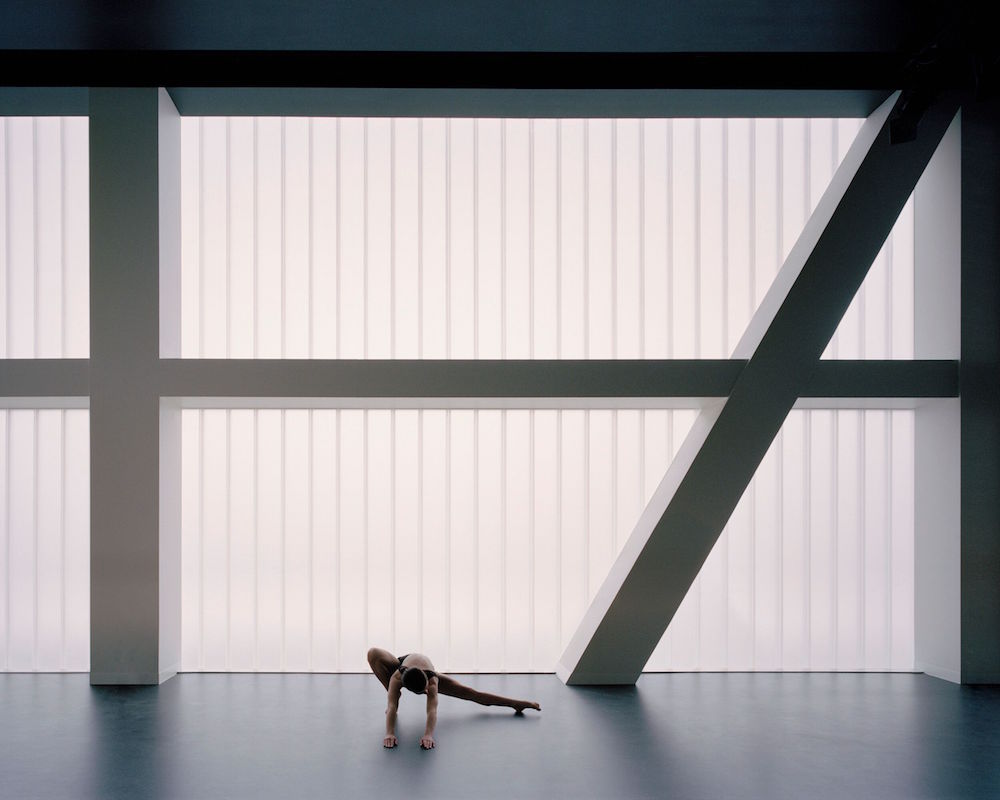In a $38.5 million redevelopment, Geelong Arts Centre has opened to the public with a new Ryrie Street entrance and a striking contemporary facade.
Designed by Hassell, the structure addresses old and new, with its translucent modern form dramatically revealing a previously-hidden heritage church.
This form sits above a new foyer and forecourt, projecting out into the street to create a strong civic presence and forge a connection with its surrounds.

“It was a challenging brief to integrate within the site, and it was important to us early on to express the church,” says Hassell principal Mark Loughnan.
“The challenges with the church were only fully understood once revealed from behind the former Mechanics Institute and Band of Hope building. The condition of the facade was quite poor, and the dismantling of the steeple and corner buttresses in 1913 to make way for the Mechanics Institute and Band of Hope building meant that structural strengthening works were required along with restorative works to the church facade.
“We worked closely with the heritage specialist and selected material elements to ensure it was as close to the original stone and texture as possible.”

Inside the structure, there are a wide range of communal and creative spaces, including two new levels of foyer, a bar area, state-of-the-art rehearsal studios and co-working spaces for arts organisations to work collaboratively.
Connected by a grand, curving staircase, the new ground floor and balcony foyer service The Playhouse theatre, while also providing a unique public space.
According to Loughnan, the redeveloped Arts Centre will help provide a new architectural identity for Geelong.
“The Geelong Arts Centre is connected to the City of Geelong in a new and open way,” he says.
“The introduction of the kerb in front of the building looks to remove congestion on the footpath and create a larger civic place for people to meet and enter. The new elevated form cantilevers over the foyer and church, creating a new civic gesture for the Geelong Arts Centre, and for the City of Geelong.
“Geelong is evolving, for many reasons in new and exciting ways as a place to live, work and visit. Architecture and design can certainly play an important role in connecting and elevating the experience of those who live and visit the city. Geelong is also a designated UNESCO City of Design, so architecture can play its role to help differentiate and define itself.
“Growing up in Geelong and now seeing Geelong Arts Centre’s Ryrie Street building come to fruition has given me an immense amount of pride. It’s not often that you get to work on international projects and use that experience to deliver a project such as this.”

According to Martin Foley MP, minister for Creative Industries, the redevelopment is the start of a new era for the Geelong Arts Centre.
“Geelong Arts Centre has long been at the heart of Geelong’s creative community – it was built after passionate locals lobbied and fundraised for a centre to celebrate local talent and bring the best in creativity to the region,” he says.
“Thirty-eight years later, the community has grown and so has Geelong Arts Centre. We’re proud to have supported this latest chapter and the growth of the region as a creative hub.”
Photography by Rory Gardiner

